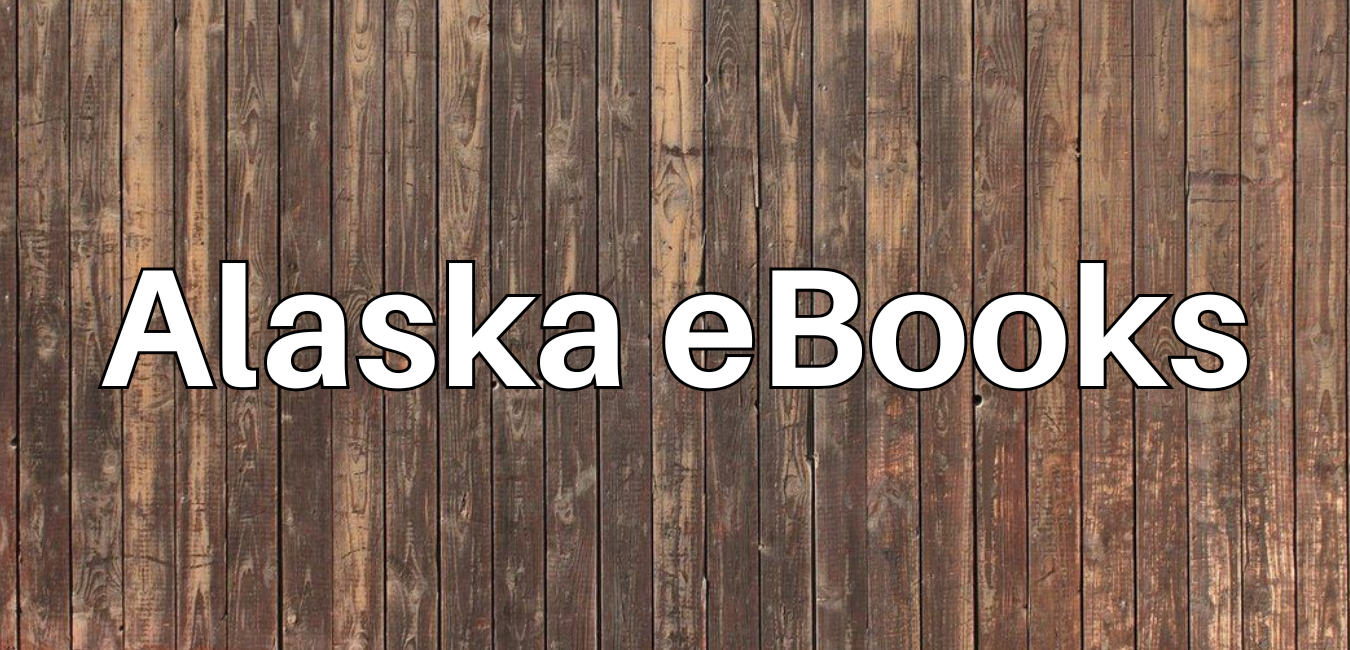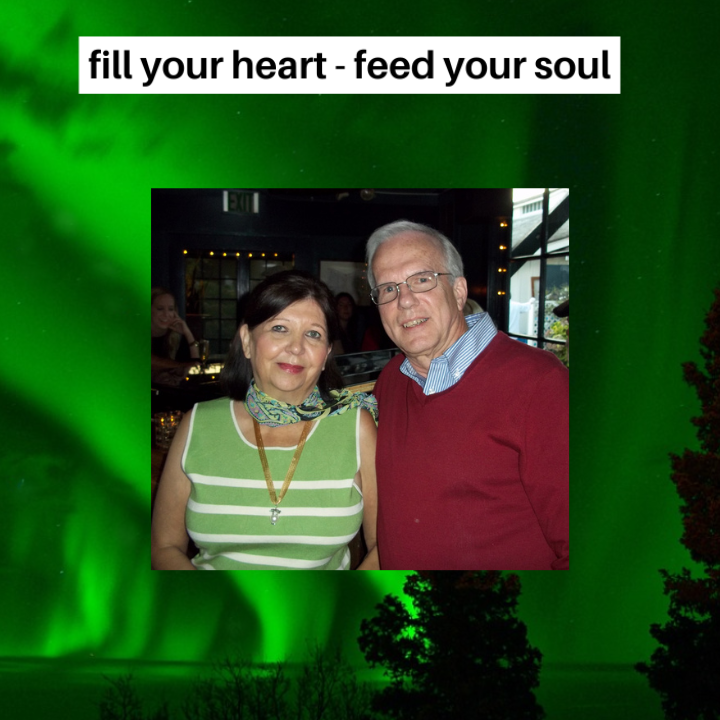Skagway Alaska
Starting with the Klondike Gold Rush, Skagway Alaska has a colorful history.
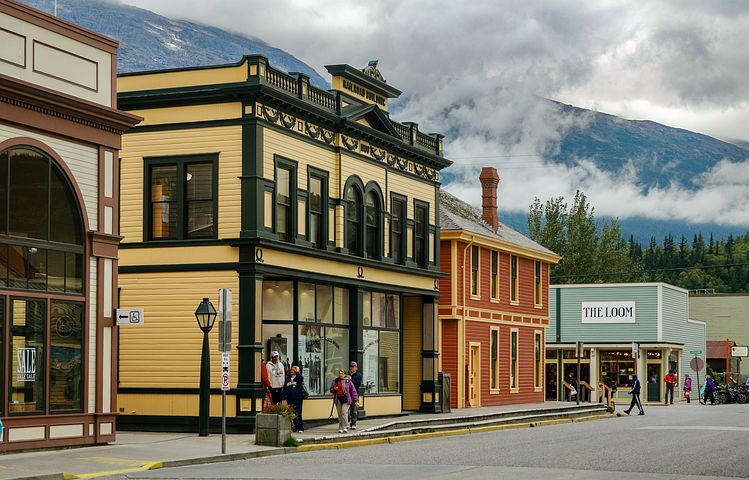
The first to settle in the area was the Tlingit tribe.
The name Skagway came from the Tlingit word Skagua, which means, “place where the north wind blows”.
Gold Fever
There were many beginnings, but gold was what drove people to what would become Skagway.
Captain William Moore founded the town in 1887.
Moore anticipated a gold rush and wanted to be ready to cash in as stampeders arrived and needed supplies to get them to the gold fields.
But the Klondike Gold Rush didn't happen until 1896.
In August 1896, Skookum Jim, George Carmack, and Dawson Charlie discovered gold in a tributary of the Klondike River called Rabbit creek.
But Skookum Jim had claimed he struck gold before, and those claims turned out to be false. So, this time, folks didn't believe him. And for that reason, it was a while before they took this gold strike claim seriously.
When they discovered his claim was true, they changed the name of Rabbit Creek to Bonanza creek.
Note:
Bonanza Creek is 600 miles from Skagway.
The Famous “Ton of Gold”
In 1897, two steamships, the Portland and the Excelsior, headed from Alaska to San Francisco and Seattle.
Ahead of the ships, a Seattle newspaper headline told the story:
“Gold, Gold, Gold – A Ton of Gold”
The steamship Portland docked in Seattle, filled with prospectors returning from the Klondike and not one, but two tons of gold.
Hundreds of people were on the docks to greet Portland.
News of the strike had set off gold fever.
The Klondike Gold Rush was on.
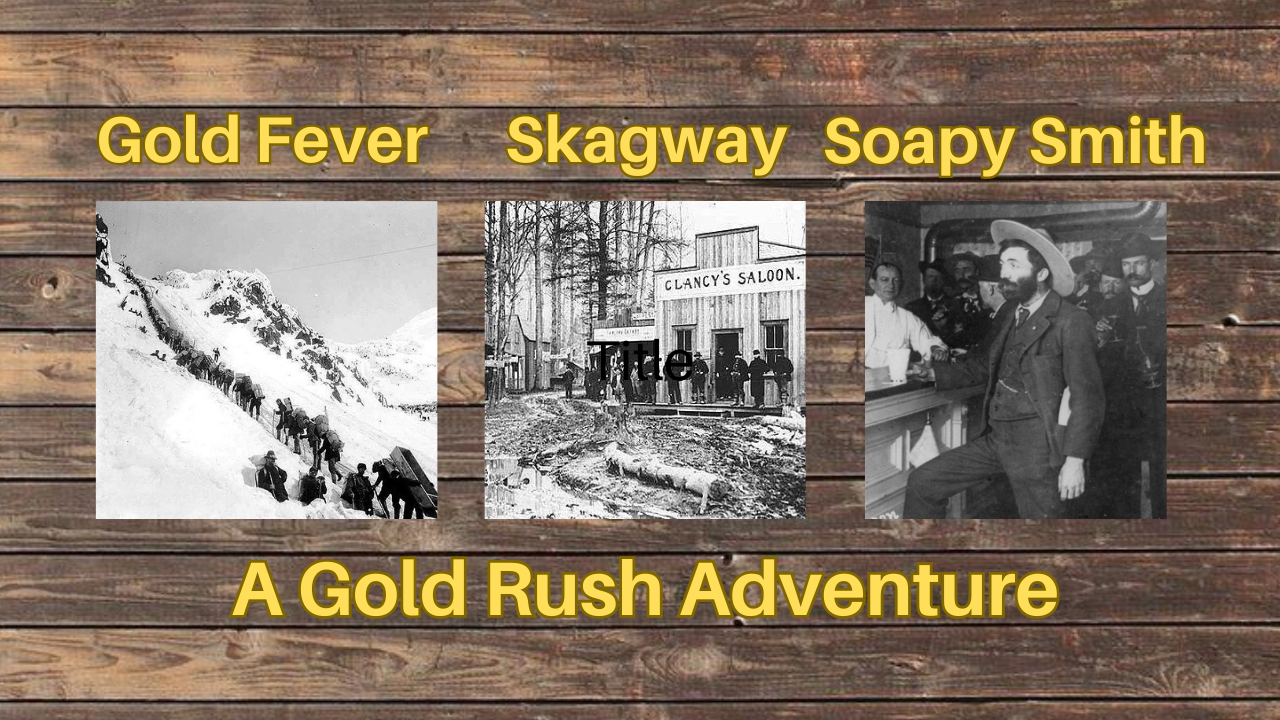
A Short Story from Michael R Dougherty
Gold Fever gripped the world.
Many gold seekers headed for Skagway, Alaska in 1897.
A few chapters from the Table of Contents:
- Bare Knuckles
- Trouble at the Golden Mule
- The Eagle was in on It
And much more
Gold Fever, Skagway and Soapy Smith is an adventure-filled short story that takes you to the gold strike, the rough town of Skagway, Alaska, and face-to-face with the notorious, Soapy Smith.
Here They Come
On July 26, 1897, the steamship Queen came to rest at Captain William Moore's dock in Skagway.
Hundreds of stampeders were on the ship looking to strike it rich.
People looking to get to the Klondike gold fields came through Skagway and the town became overrun with people.
In the fall of 1897, a post office, church, and the Skagway News, a local newspaper, had sprung up.
By 1898, Skagway had become the largest city in Alaska, with a population of 8,000 to 10,000 all crowded into the tiny town.
The White Pass and the Chilkoot Pass
During the gold rush, stampeders used two trails as they headed for the Klondike gold fields.
The 40-mile, White Pass, which also became known as “Dead Horse Pass” because it was so steep that many horses died along the way.
The second trail and the most famous of the two was the 33-mile Chilkoot Pass.
Soapy Smith
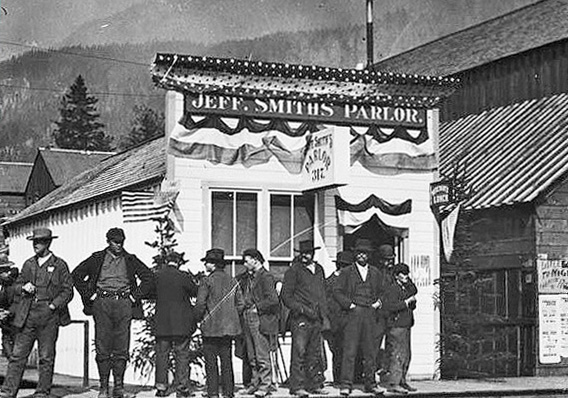 Skagway during the Gold Rush
Skagway during the Gold RushA smooth talking con man named Jefferson Randolph, “Soapy” Smith came to Skagway from Colorado to take control of the lawless town of Skagway.
But he didn't come alone.
Soapy brought his gang of thugs, thieves, and card sharps to help him.
To establish himself as a legitimate businessman in the eyes of the good citizens of Skagway Alaska, he opened “Jeff Smith's Parlor”, a saloon and gambling place that was also a front for his many cons.
Soapy was successful at taking over the town. He was even the Grand Marshal of the 4th of July parade.
But some of his men went too far when they mugged a young miner fresh from the gold fields, robbing him of his gold poke.
The town decided to put an end to Soapy and his men, and they assembled at the far end of the Juneau Wharf to make their plans.
When Soapy heard what the town folk were up to, he grabbed a rifle, and along with his heavily armed men, he headed for the wharf.
Once there, Soapy ended up in a shootout with Frank Reid, a surveyor who had laid out the town of Skagway.
Both Soapy and Reid died.
“Gold Fever, Skagway and Soapy Smith” is an adventure-filled short story that takes you to the gold strike and the rough town of Skagway, Alaska, where you come face-to-face with Soapy Smith.”
Skagway Alaska
In May 1899, a fire destroyed seven downtown buildings.
On June 28, 1900, Skagway became the first city to incorporate in Alaska. They beat Juneau by only one day.
In 1903-1905 a young 22-year-old Skagway man named Bobby Sheldon built the first automobile in Skagway. They featured his car in the 1905 4th of July Parade.
Interesting Facts:
One gold rush miner struck 13,000 dollars in gold and headed back to Seattle.
His name was John W. Nordstrom, and he would later create Nordstrom's department store.
The town of Skagway is one of only three cities in Southeast Alaska that are accessible by road.
Skagway Alaska is home to the White Pass and Yukon Railroad, also known as the “Scenic Railway of the World”.
The Golden North Hotel in Skagway is the oldest hotel in Alaska.
Skagway Weather
Skagway has a Humid Continental climate and the name of the weather location is the Rain Shadow of the coastal mountains.
The hottest temperature ever recorded was 92 degrees F, most recently in 2019.
The coldest temperature ever recorded was minus -24 degrees F on February 2, 1947.
BONUS
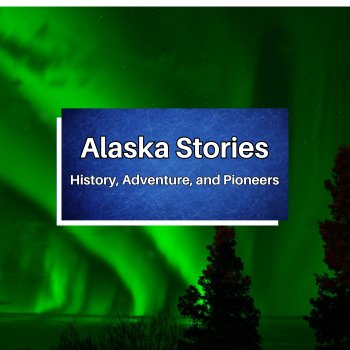
Join for FREE and get Alaska Stories
from two Alaskans





